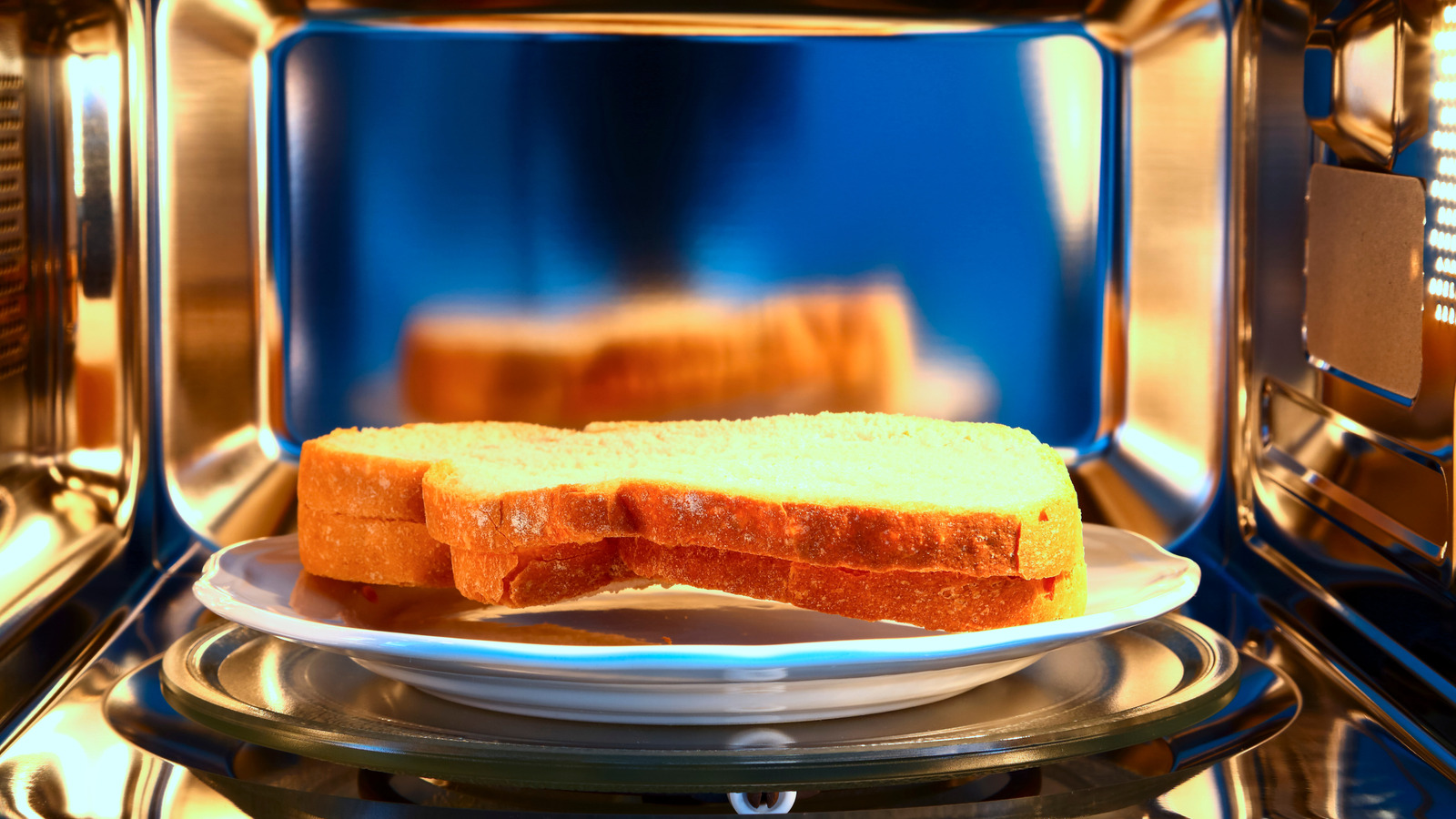
"So what actually happens when you microwave bread? While it may seem warm and toasty at first, give it a couple of minutes and it toughens into floury bricks. Feel the crust while you're at it, too - instead of that shattering crunch, it just hardens into something flat and unappealing. Here's the science: microwaves heat food by "jiggling" the water molecules deep within the bread. That water quickly turns to steam and pushes outward."
"Since the heat comes from the outside in, the crust is the first to re-crisp thanks to the Maillard reaction. Just watch out - without a little help, the oven can dry out your bread. Fortunately, there's an easy hack that you can use to counter this problem: spritz the loaf with some water before you throw it into the oven."
Microwaving day-old bread temporarily warms it but ultimately makes it tough and floury, while the crust becomes rubbery instead of crisp. Microwaves heat by agitating water molecules inside the loaf; the water turns to steam, initially absorbed by starches that make the bread feel soft and warm. As the bread cools, those starches recrystallize and expel moisture, resulting in hard, dry bread and an unpleasant crust. Reheating bread in a conventional oven applies heat from the outside in, allowing the crust to re-crisp via the Maillard reaction. Spritzing the loaf with water before baking creates steam that keeps the crust flexible long enough for starches to set into a thin shell that cools into a golden, crackly crust.
Read at Tasting Table
Unable to calculate read time
Collection
[
|
...
]